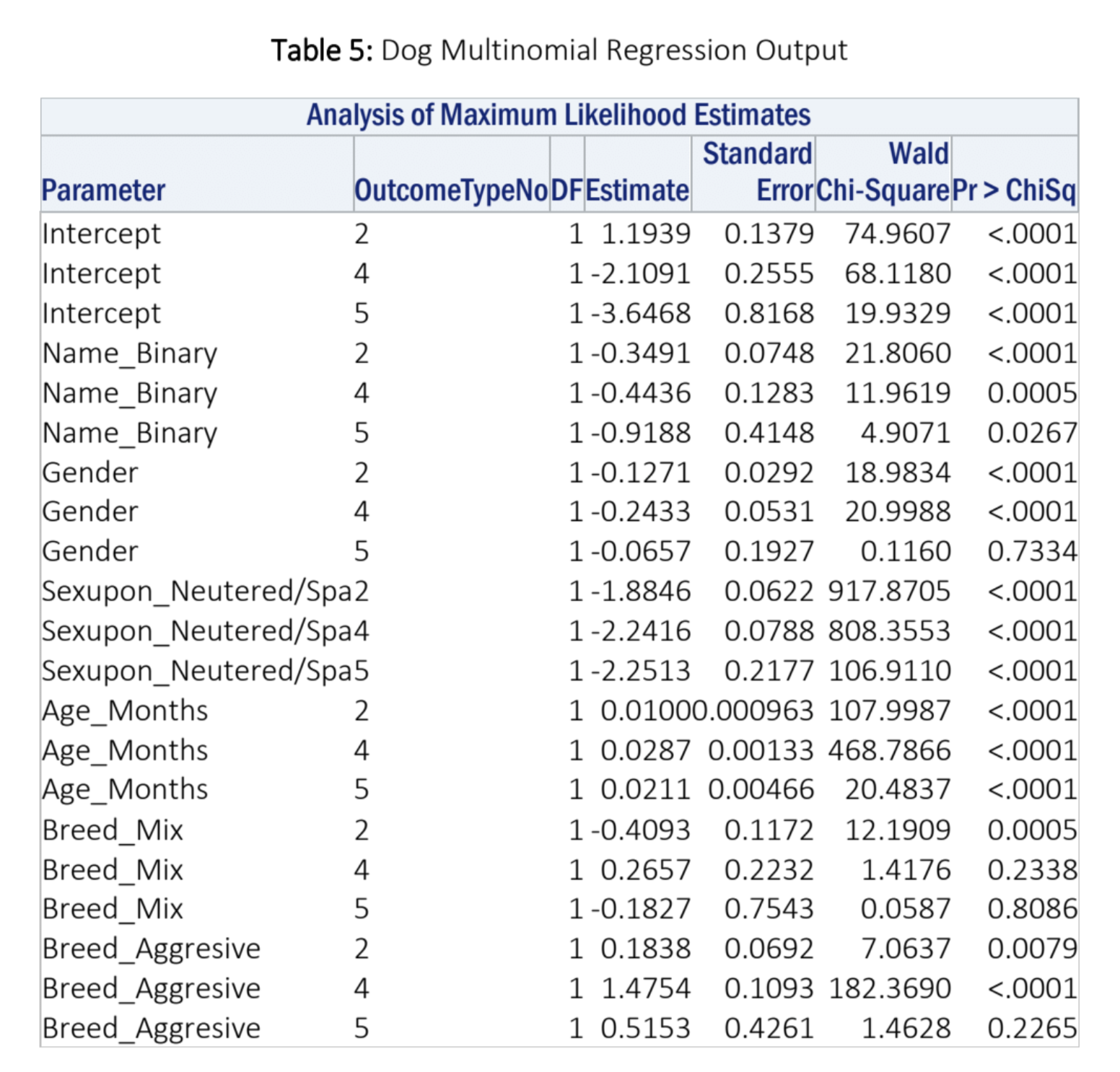Predictive Modelling for an Animal Shelter
All animal shelters face resource scarcity and have more animals than they can care for. The goal is to learn how to better allocate the resources that they do have. The purpose of conducting this research is to discover trends in the “outcomes” of animals at shelters and understand what factors contribute to each outcome. By understanding the insights from the outcome trends, we can help shelters focus their energy and resources on specific animals in order to help them with achieve better outcomes.

The Process & Solution
Data was sourced from Kaggle.com. After studying the data, we started by cleaning the data and preparing it for analysis. We used two prediction methods to reach out final solution; Logit Regression and Multinomial Logit Regression.
Based on our analysis, we found three factors that were important for cats/dogs in shelters to increase the probabilities of them getting adopted or fostered. They are (1) whether or not the pet is neutered/spayed, (2) the type of breed – whether they may be considered aggressive or not, and (3) the age of pet.